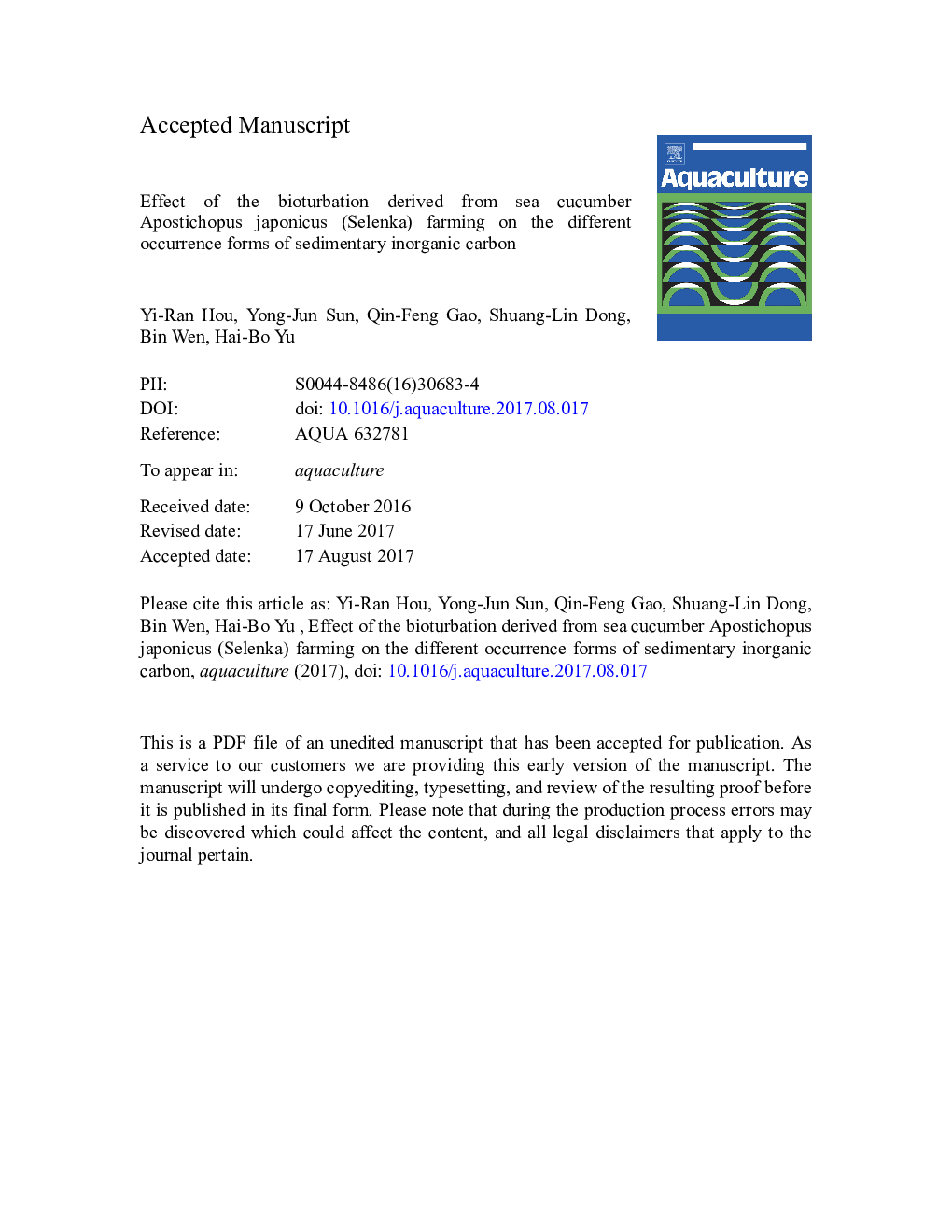| Article ID | Journal | Published Year | Pages | File Type |
|---|---|---|---|---|
| 5539162 | Aquaculture | 2017 | 44 Pages |
Abstract
A 70-day experiment was carried out to investigate the impact of sea cucumber Apostichopus japonicus bioturbation on the contents of different forms of inorganic carbon (IC) in the sediment. Sea cucumbers were cultured in fiberglass tanks (50 L) with 5 cm-thick sediment on the tank bottom. The tanks were divided to 4 groups according to the culture densities, i.e., 0 ind/tank, 3 ind/tank, 5 ind/tank and 7 ind/tank. For each of the 4 densities, 4 replicates of sea cucumbers were cultured. The IC forms in sediment were separated into five forms using the sequential extraction method according to IC characters: NaCl form, NH3·H2O form, NaOH form, NH2OH·HCl form and HCl form. The results showed that the contents of IC (ANOVA, F3, 32 = 3.466, P < 0.05) and NH2OH·HCl form (ANOVA, F3, 32 = 34.132, P < 0.05) in sediment decreased significantly with the increasing culture densities of sea cucumber. The sea cucumbers bioturbation resulted in the dissolution of IC in sediment and the participation of the NH2OH·HCl form inorganic carbon in the carbon cycle. As such, reasonable stocking densities of sea cucumber were important for the sustainability of sea cucumber farming in the aquaculture ponds.
Related Topics
Life Sciences
Agricultural and Biological Sciences
Aquatic Science
Authors
Yi-Ran Hou, Yong-Jun Sun, Qin-Feng Gao, Shuang-Lin Dong, Bin Wen, Hai-Bo Yu,
